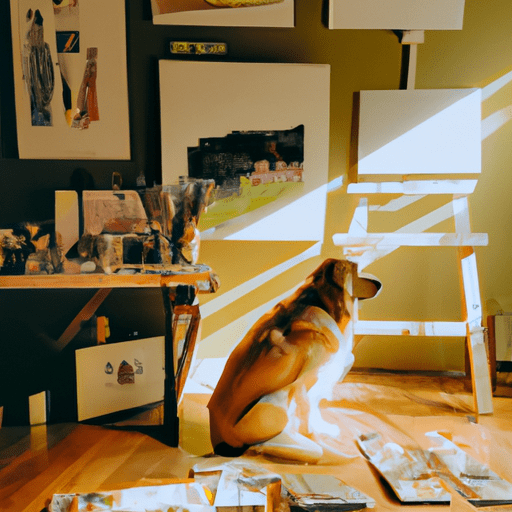“`markdown
How to Paint Dogs
1. Understanding Your Subject
You know that dogs are more than just pets, they are companions, friends and beloved members of our families. They also make for beautiful art subjects. But painting them can be a little intimidating. Don’t worry, we’ll guide you through the process with the care and patience of a caregiver, just like you.
- Familiarize with the breed: Every breed has unique features. A Golden Retriever’s face is different from a Pug’s, for instance. Keep these distinctions in mind.
- Observe your own pet: If you have a dog, spend time observing them. Notice the way the fur lies, the shine in their eyes, the way they move.
2. Gathering Your Materials
Having the right tools is essential. You wouldn’t attempt to fix a leaky faucet without a wrench, would you? Here’s what you’ll need:
- Paint: Acrylic or oil paints are the most suitable.
- Brushes: A variety of sizes, from larger ones for the background to fine ones for details.
- Canvas: Choose a size that fits your vision for the painting.
- Palette: For mixing your paints.
- Easel: To hold your canvas.
3. Preparing Your Canvas
And now, the stage is set. Just like planting a garden, you need to prepare the ground before you sow.
- Sketch your dog: Outline the major features. This is your guide, your map.
- Apply a base layer: This sets the tone of your painting. Experiment with color. Remember, shadows aren’t always black, and light isn’t always white.
4. Painting Your Dog
Now, the fun part! Let’s bring your dog to life on canvas.
- Start with the darker tones: This provides depth to your painting.
- Layer the mid-tones: These are the ‘true’ colors of your dog.
- Add the highlights: These are the areas where light hits the most.
- Detail time: Be patient, take your time. Every hair, every whisker counts.
5. Final Touches and Preservation
Finally, step back and admire your work. It’s a labor of love, a testament to your bond with your furry companion.
- Add finishing touches: Adjust colors, add more details if needed.
- Preserve your painting: Use a varnish to protect your painting.
Frequently Asked Questions (FAQ)
Q: What type of paint should I use?
A: Acrylic or oil paints are the most suitable for painting dogs.
Q: Can I use a photo reference?
A: Yes, using a photo reference can help, especially for capturing details.
Q: How can I make my painting look realistic?
A: Attention to detail, understanding light and shadow, and patience are key.
Q: Do I need to varnish my painting?
A: Yes, varnishing helps protect your work and enhances the colors.
Q: How long does it take to paint a dog?
A: This can vary widely, depending on size, detail, and your experience level. It could take anywhere from a few hours to weeks.
“`



